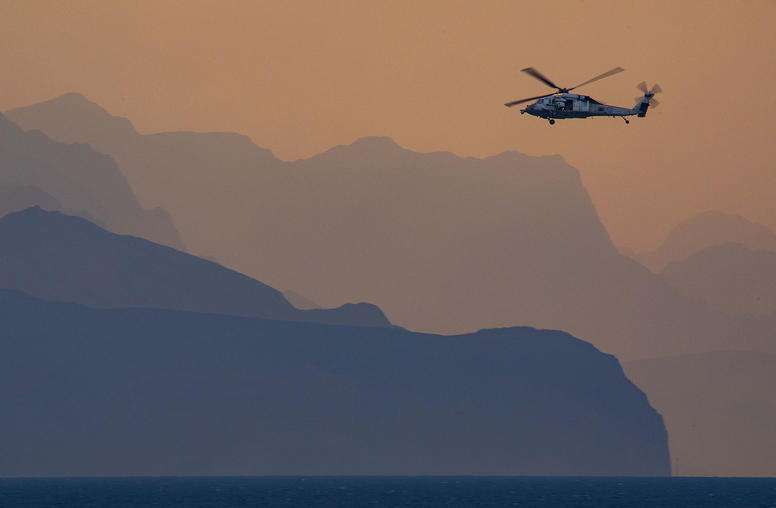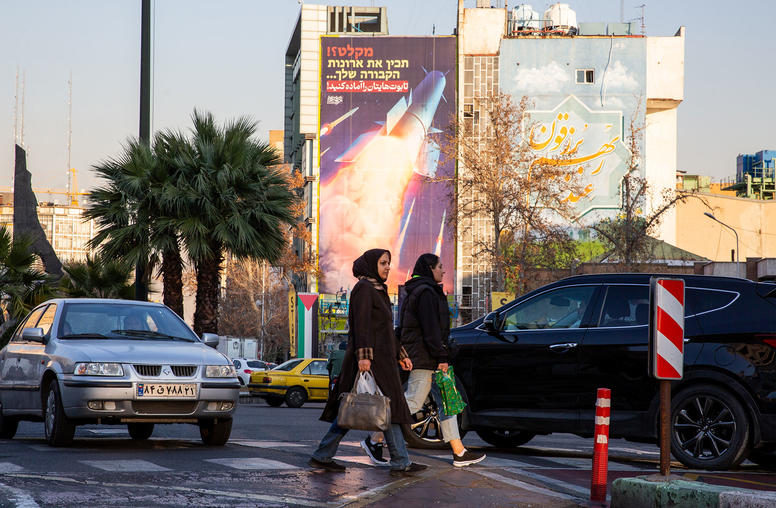Examining the Prospects for Iran Nuclear Talks
Talks between Iran and a group known as the P5 plus 1 (the five United Nations Security Council permanent members plus Germany) on Iran’s nuclear programs are expected to begin on April 14 in Istanbul, Turkey. The resumption of negotiations might represent an important juncture in the long saga of international efforts to restrain and verify the nature of Iran’s nuclear efforts, which Tehran contends is intended to develop energy sources and conduct research but which the United States and other key international players suspect is a bid to develop the capability to produce nuclear weapons.
Talks between Iran and a group known as the P5 plus 1 (the five United Nations Security Council permanent members plus Germany) on Iran’s nuclear programs are expected to begin on April 14 in Istanbul, Turkey. The resumption of negotiations might represent an important juncture in the long saga of international efforts to restrain and verify the nature of Iran’s nuclear efforts, which Tehran contends is intended to develop energy sources and conduct research but which the United States and other key international players suspect is a bid to develop the capability to produce nuclear weapons. The parties are to meet after an extended build-up of diplomatic tensions, continued Iranian defiance of international demands to suspend nuclear fuel activities, intensifying energy and financial sanctions on Iran and market-rattling talk of military strikes against Iran’s nuclear facilities.
Daniel Brumberg is senior adviser to the Center for Conflict Analysis and Prevention at the U.S. Institute of Peace (USIP). He focuses on issues of democratization and political reform in the Middle East and wider Islamic world, particularly in Algeria, Egypt, Indonesia, Iran, Iraq and Syria. A former USIP Jennings Randolph senior fellow, he is also an associate professor at Georgetown University.
Iran last met for nuclear talks with the P5 plus 1 in January 2011. What was the outcome and why have there been no talks for well over a year?
The January 2011 talks fell apart pretty quickly, in large measure because the two sides came into them with completely opposing opening positions. The Iranians, represented by Saeed Jalili, insisted before those talks that Iran would only negotiate if the United States lifted all sanctions and guaranteed that Iran could continue enriching uranium. Moreover, the Iranians rejected any proposals to revive previous confidence-building measures. The most important of those was a revised “fuel swap” agreement by which Tehran would send both its low-enriched uranium and its 20 percent-enriched uranium abroad, and in return would receive fuel rods for its Tehran reactor. Tehran subsequently denied that these were preconditions, but by the time the negotiators came to the table whatever confidence that had existed was gone. Gone, too, were plans for a bilateral set of talks between the United States and Iran.
The two sides had minimal interaction: I don’t think that then Undersecretary of State (and now Deputy Secretary) Bill Burns exchanged more than a few words with his Iranian counterparts, if that much. Then things fell apart. The Iranians were surprised: They did not think that the P5-plus-1 countries were willing to walk away. But they did, without agreeing to any follow-up talks. In the ensuing year, the lack of trust between the two sides, the determination of the United States and its allies to step up pressure through “coercive sanctions” and the internal disputes within the Iranian government all worked against the resumption of talks.
What is the geostrategic context for these negotiations?
There are three key points about this round of talks: First, they take place against the backdrop of the “Arab Spring” and in the immediate context of Turkey’s diplomatic support for the democratic opposition to President Bashar Assad and his regime in Syria. The Iranians had counted on Turkey’s implicit support in the two years prior to the January 2011 Arab Spring, but the diplomatic leverage Tehran had previously secured from Ankara no longer exists. The Iranians are so unhappy about this shift that they initially balked at holding this round of talks in Istanbul, but then relented. The second thing to keep in mind is that the United States and its allies have secured punishing economic sanctions that are hurting Iran’s economy and undercutting its oil industry--the life blood of its economy. In that regard, things are bound to get worse for Iran rather than better.
Third, absent some measurable progress in talks, the prospect of a military attack on Iran, coming from Israel or the United States, will grow. Indeed, if the talks collapse the prospect of the use of force will accelerate quickly. All these factors encourage both sides to put on the negotiating table ideas that will, at the least, open the way for further talks. The question is whether this would all be tactics—a holding operation–or whether there would be enough substance on the table to create the basis for a more serious and sustained negotiation. Any serious negotiation is bound to take time—months. It is not clear that the political clock will support that time frame.
What are the contours of the deal or arrangement that the United States and other P5-plus-1 members are expected to offer Iran, and how does that possible deal differ from what was on offer previously? Also, has Iran staked out a position in response to that anticipated offer?
Through Turkish Prime Minister Recep Tayyip Erdogan, who recently met with Iranian supreme leader Ali Khamanei, and through several well placed press leaks, the United States has signaled that it is ready to provide limited recognition of Iran’s enrichment rights under the Nonproliferation Treaty and has hinted at the possibility of reviving a new version of a nuclear fuel swap deal, but only if Iran agrees to cease enriching uranium and closes down its quasi-secret military complex in Fordow, outside of the city of Qom.
For their part, the Iranians have indicated that they might be willing to halt their enrichment of uranium at no more than 20 percent. Given that this program has advanced far beyond what Iran needs for medical or peaceful purposes, such an offer would not be insignificant. However, Foreign Minister Ali Akbar Salehi has since backtracked and has declared Tehran’s rejection of any and all “conditions” prior to the talks. All of this does not give one reason to be very hopeful. At the end of the day, the only thing that might sustain talks is the knowledge that walking away from them could set the stage for rapid military escalation.
The Obama administration and its Western allies look poised to enforce sanctions on Iran’s financial transactions that will further undercut the country’s oil industry. How will the prospect of increasingly “punishing sanctions” affect Tehran’s calculations?
From Tehran’s vantage point, these sanctions are part and parcel of a strategy to weaken the government, perhaps even to force regime-change. Given these perceptions, Iranian leaders have little confidence that the United States and its allies are ready to substantially reduce or eliminate sanctions in return for concessions from Iran. Absent a clear set of incentives to match this coercive track, sanctions are more likely to harden Tehran’s position rather than to elicit cooperation. If the United States and its allies are serious about re-energizing a two-track approach—one that is linked to a broader strategic vision that highlights both the costs and the benefits of a nuclear deal—then Washington will have to signal that readiness to Tehran either before or during the negotiations themselves. One of the problems with making progress is that the negotiating positions of both Washington and Tehran have tended to pivot around tactics rather than strategy: It is not clear what kind of deal either side is ultimately ready to live with.
How do Iran’s internal politics affect its negotiating position?
For the time being, the reformist Green Movement is a negligible factor. The locus of political struggle is within the multi-dimensional “conservative camp.” President Mahmoud Ahmadinejad’s allies have been on the defensive for more than two years. They are under attack from hard-line clerics and political leaders, who suspect that the president’s populism poses a challenge to the supreme leader. This hard-line group scored a significant victory in the recent parliamentary elections, and some believe (though I do not share this belief) that it may try to get rid of the position of president, thus solidifying the supreme leader’s uncontested authority. What is the effect of such struggles? In the main, they create an incentive for Iranian politicians to use the nuclear issue to score points against their political adversaries, and this negative dynamic is once again on full view in Tehran. That said, these internal power struggles also could create space for a deal, provided that the benefits and incentives associated with deal –and not just the costs—are defined at some point. The recent political reemergence of former President Hashemi Rafsanjani, who is president of Iran’s Expediency Council (and who advocated for U.S.-Iranian dialogue in the past) might suggest that the supreme leader wants to bolster support within the ruling elite for negotiations with the United States. But it is too early to explain the significance of Rafsanjani’s partial and guarded rehabilitation.
Since the last nuclear talks with Iran, how much progress is Iran believed to have made in accumulating enriched uranium, in expanding its enrichment capabilities and in other aspects of its nuclear programs?
Iran’s stockpile of low-enriched uranium and of uranium that has been enriched to 20 percent has grown considerably. (According to a report by David Albright’s Institute for Science and International Security that analyzes International Atomic Energy Agency findings, Iran had produced 5,451 kilograms of low-enriched uranium as of February 4—with Iran saying 580 kilograms of that had been produced since October 17 of last year. The New York Times reported this week that Iran has produced about 100 kilograms of the uranium enriched to the 20 percent level.) Moreover, the complex at Fordow might provide sufficient protection to withstand an attack.
The Israelis argue that progress at that complex is creating a “zone of immunity,” and thus they feel that the time for a negotiated solution is rapidly closing. Knowing this, the United States is pushing hard on the Fordow issue. But absent a shift to a wider strategic discussion about the ultimate goal of any negotiations, I don’t anticipate that the Iranians will meet Washington’s insistence that Fordow be shut down.
Considering all the factors, it is difficult to be very hopeful about this next round of negotiations.
Explore Further
- Iran Oil Sanctions: A Race against Time
On the Issues by Raymond Gilpin



